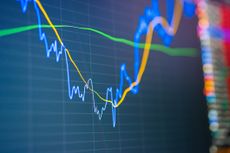Don't Say 'Bon Voyage' to Cruise Lines
Shares of Carnival and Royal Caribbean have sunk lately, so get them while they're cheap.
Cruise ships are going full steam ahead, but the market is torpedoing the fleets' share prices. The two largest operators are both double-digit losers so far in 2008. Investors obviously assume fewer people are prepared now to shell out for a vacation at sea. Fuel costs are another drag.
Like so many good stocks in bad times, there's an opportunity if you're willing to buy and wait for the seas to settle. When cruise stocks are hot, they can double or triple in a year or two.
Two fleet owners dominate the seas. Carnival (symbol CCL) is the biggest with 85 ships under 11 brands, including Carnival Cruise Lines, Princess Cruises and Holland America. It's joined by Royal Caribbean (RCL) with 37 ships run under five brands, most notably its Royal Caribbean flagship brand.

Sign up for Kiplinger’s Free E-Newsletters
Profit and prosper with the best of expert advice on investing, taxes, retirement, personal finance and more - straight to your e-mail.
Profit and prosper with the best of expert advice - straight to your e-mail.
Six in ten cruisers travel with Carnival. Royal Caribbean has nearly all the rest of the market. These giants can spread the costs of labor, supplies, docking and fuel over their large fleets. Only a handful of small-fry independents are left.
Cruise prices have been rising since last May, says Raymond James analyst Joseph Hovorka.
Using quarterly surveys of travel agents, Hovorka sees the price hikes as a sign of industry health. Normally, as prices rise for cruises, the cruise lines make more money and investors are rewarded by higher stock prices -- provided the ships don't set out to sea with too many empty cabins.
Fuel costs are a serious problem, though. Royal Caribbean's oil bill is 40% higher than it was in 2006. The company hedges between 40% and 60% of its fuel costs, but it's still squeezed. In general, over the past five years, fuel has grown from roughly 5% of a cruise line's expenses to more than 10%. Newer ships are more efficient and accommodate more passengers per unit of fuel, says Ted Baszler, co-manager of Heartland Select Value, which has owned Royal Caribbean stock since October. Still, in February, both companies levied a fuel surcharge of $5 per day per passenger.
Fortunately, in a good sign for the future, the cruise industry is trying to attract travelers from other regions of the globe. Europe is an opportunity because its citizens have strong euros and sterling, and few Europeans have ever taken a cruise compared with Americans.
Carnival plans to increase passenger capacity in the European market by 22% this year. Ibero Cruises, a Spanish cruise line Carnival started last year, will play a critical role. Royal Caribbean plans to launch a French brand, CDF Croisieres de France, in May, to cater specifically to French passengers with French food, entertainment and décor. Royal Caribbean wants to develop a German cruise line in 2009.
Getting back to the shares: The news is ugly. Carnival, which closed down 0.5% on March 7 to $38.34, and Royal Caribbean shares, a 2.5% loser to $33.01, are more than 25% off their 52-week highs. The weak showing this year has trimmed both stocks' average annualized ten-year returns to only 4%, a performance no better than Southwest Airlines or Starwood Hotels, despite the extra dollop of glamour.
At their best, or at the right time, the cruisers really fly. In 2003 and 2004, after the last recession and when the fear of 9/11 on travel subsided, the stocks had enormous years.
The cruise stocks are cheap now for good reasons. Royal Caribbean trades at ten times the $3.27 per share that analysts expect it to earn in 2008, while Carnival stock trades at 12 times the average earnings estimate of $3.19 per share for the year ending November 2008.Carnival expects fuel prices to reduce fiscal 2008 earnings by 50 cents per share, so until and unless the fuel inflation subsides, it's going to be tough to do any better.p
These stocks are near their lowest price-to-earnings ratio in a decade. So, if you're a contrarian or a gambler, this isn't a bad time to invest. Historically, cruise-line shares tend to get bid up right as the cruise business is headed for a downturn and bottom out as the economic outlook improves.
"There are times in the cruise cycle where it really pays to buy and it really pays to trim," says Tim Fidler, co-manager of Ariel Focus fund, a longtime owner of Carnival shares. "This is one of those times where it really pays to buy."
Hovorka rates Carnival and Royal Caribbean strong buys and has a 12-month target price of $57 on Carnival and $52 on Royal Caribbean.
-
 Starbucks BOGO and New Sweet and Spicy Drinks
Starbucks BOGO and New Sweet and Spicy DrinksFor a limited time, Starbucks is announcing four new "swicy" drinks that are both spicy and sweet.
By Kathryn Pomroy Published
-
 Stock Market Today: Dow Slips After Travelers' Earnings Miss
Stock Market Today: Dow Slips After Travelers' Earnings MissThe property and casualty insurer posted a bottom-line miss as catastrophe losses spiked.
By Karee Venema Published
-
 Stock Market Today: Dow Slips After Travelers' Earnings Miss
Stock Market Today: Dow Slips After Travelers' Earnings MissThe property and casualty insurer posted a bottom-line miss as catastrophe losses spiked.
By Karee Venema Published
-
 Stock Market Today: Stocks Stabilize After Powell's Rate-Cut Warning
Stock Market Today: Stocks Stabilize After Powell's Rate-Cut WarningThe main indexes temporarily tumbled after Fed Chair Powell said interest rates could stay higher for longer.
By Karee Venema Published
-
 Stock Market Today: Stocks Reverse Lower as Treasury Yields Spike
Stock Market Today: Stocks Reverse Lower as Treasury Yields SpikeA good-news-is-bad-news retail sales report lowered rate-cut expectations and caused government bond yields to surge.
By Karee Venema Last updated
-
 Stock Market Today: Nasdaq Leads as Magnificent 7 Stocks Rise
Stock Market Today: Nasdaq Leads as Magnificent 7 Stocks RiseStrength in several mega-cap tech and communication services stocks kept the main indexes higher Thursday.
By Karee Venema Published
-
 Stock Market Today: Stocks Tumble After a Hot Inflation Print
Stock Market Today: Stocks Tumble After a Hot Inflation PrintEquities retreated after inflation data called the Fed's rate-cut plans into question.
By Dan Burrows Published
-
 Stock Market Today: Stocks End Mixed Ahead of Key Inflation Reading
Stock Market Today: Stocks End Mixed Ahead of Key Inflation ReadingEquities struggled before tomorrow's big Consumer Price Index report.
By Dan Burrows Published
-
 Stock Market Today: Stocks Closed Mixed in Choppy Trading
Stock Market Today: Stocks Closed Mixed in Choppy TradingVolatility returned as market participants adjusted their expectations for rate cuts.
By Dan Burrows Published
-
 Stock Market Today: Stocks Rally After Blowout Jobs Report
Stock Market Today: Stocks Rally After Blowout Jobs ReportStocks soared into the weekend as investors brushed off strong payrolls data and lowered rate-cut expectations.
By Dan Burrows Published